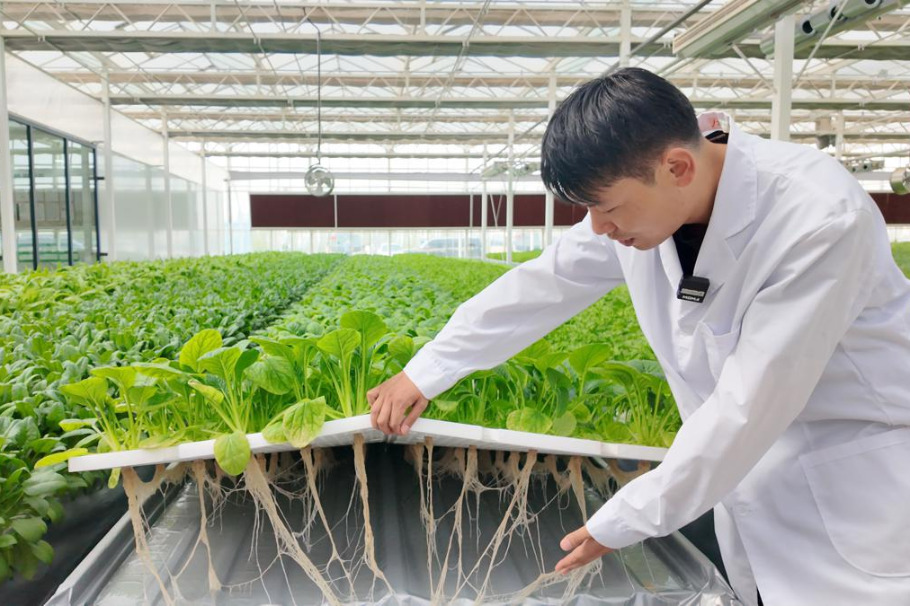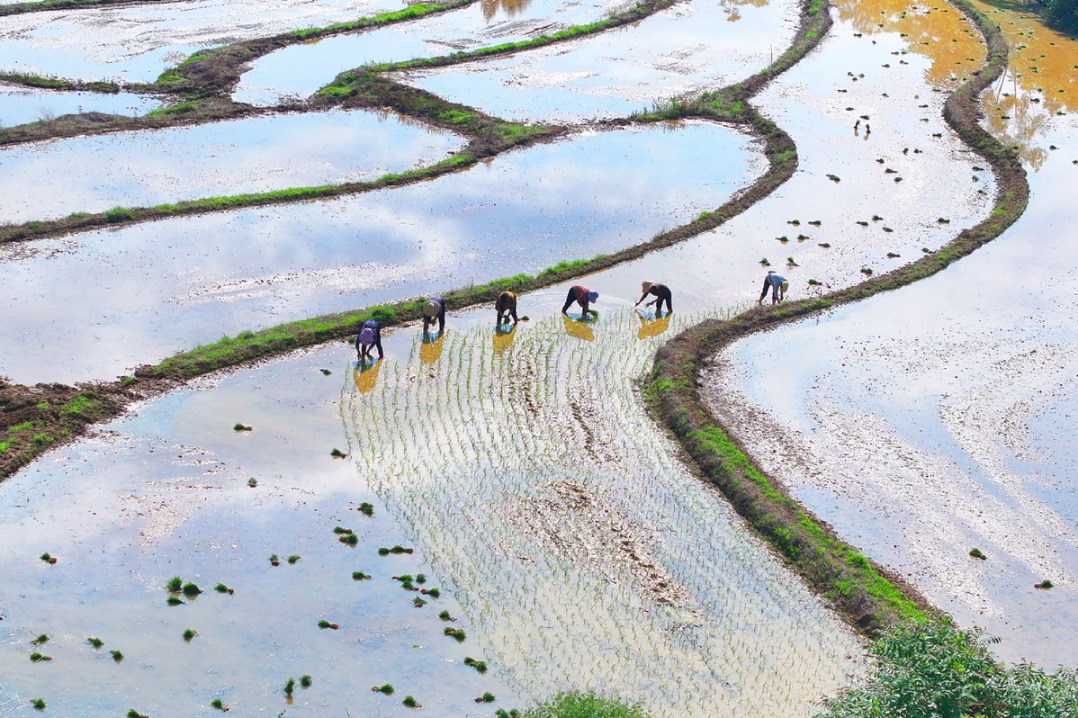Chinese scientists discover Qinghai-Tibet Plateau's unique role in greenhouse emissions

Chinese scientists have recently discovered that the Qinghai-Tibet Plateau acts as the only net greenhouse gas (GHG) sink region in China.
The study, led by Wang Tao, a researcher from the Institute of Qinghai-Tibet Plateau Research under the Chinese Academy of Sciences, was published in the journal Science Bulletin this month.
The study integrated GHG flux measurements in empirical modeling approaches, emissions from the livestock sector with process-based biogeochemistry modeling to systematically estimate methane (CH4) and nitrous oxide (N2O) fluxes across terrestrial ecosystems and inland waters in 2000s and 2010s. In addition, they projected the total livestock CH4 and N2O emission during 2060s under scenarios with different policy intervention and mitigation measures.
Wang noted that CH4 and N2O are the second and third most important GHG after carbon dioxide (CO2). Current scientific research largely focuses on carbon neutrality with anthropogenic CO2 emissions being net-zero, while climate neutrality, with the sum of GHG emissions being net-zero, has been gaining prominence in climate policy in the context of limiting global warming to 1.5 C and 2 C.
Enhancing the land surface uptake of GHG could contribute to climate neutrality, but as a prerequisite, it requires accurate quantification of the net land surface GHG balance. The annual carbon sinks in forests and grasslands have been reported to completely offset the total annual fossil CO2 emissions on the Qinghai-Tibet Plateau.
However, the Qinghai-Tibet Plateau is the most elevated pastoral area in the world, where more than 40 million of livestock (e.g. Yak and Tibetan sheep) graze on grasslands that are the primary sources of energy, protein and fat for at least 5 million local residents, and encompasses more than half of China's lakes that are major contributors to CH4 and N2O emissions.
These CH4 and N2O emissions from an intensifying livestock system and expanding surface water, especially for massive emerging thermokarst lakes on permafrost regions over the Qinghai-Tibet Plateau, remains unknown, and the potential of these emissions in offsetting terrestrial carbon dioxide (CO2) sinks are both of great concern and uncertainty.
Results indicated that the contemporary GHG over the Qinghai-Tibet Plateau acted as a sink of 90.18 Tg CO2e a?1 in 2000s and 2010s, nearly twice that of China, and more than 40 percent offset by CH4 and N2O emissions.
In addition, CH4 and N2O emissions from the livestock system, mostly (90 percent) comprised of enteric fermentation by ruminants, compensated around 21 percent of the terrestrial CO2 sink, and those from wetlands and inland waters accounted for around 13 percent of the terrestrial CO2 sink.
Moreover, the GHG sink is larger than direct anthropogenic (fossil fuel and industrial source) GHG emissions, suggesting that the Qinghai-Tibet Plateau acted as the only near climate-neutral state region in China.
The research further showed that the current GHG sink has the low possibility to tip in a warmer and wetter climate, and the land surface of the Qinghai-Tibet Plateau would continue to act as an appreciable GHG sink under the medium scenarios for the 2060s. However, the sink strength depends on the evolution of terrestrial CO2 sinks and future pathways of pastoralism.
Under the medium warming scenario, the enhancement of terrestrial CO2 sinks in 2060s due to warming and rising CO2 fertilization effect would be counterbalanced by livestock CH4 emissions when the current overgrazing status continues.
The GHG sinks could be further maximized to 139.7 Tg CO2e a?1 for the 2060s, which is around 1.5 times as large as the current GHG sink, when implementing reduced emission intensity policies under the dynamic livestock-forage balance policy.
The research suggested that a transition to a sustainable pastoralism, coupled with the adoption of mitigation practices (e.g., improved livestock diets and animal health) that reduce emission intensity per livestock product could significantly reduce CH4 and N2O emissions, making it being as a cost-effective approach in achieving self-defined national climate pledges for China under the Paris Agreement.
- Chinese scientists discover Qinghai-Tibet Plateau's unique role in greenhouse emissions
- Pet owners embrace traditional Chinese veterinary treatments for their beloved pets
- China to recruit over 20,000 special post teachers for rural areas
- Scientists develop contact lenses that let humans see near-infrared light
- China leading globally in installed hydropower capacity
- Humanoid robot introduces China Daily




































